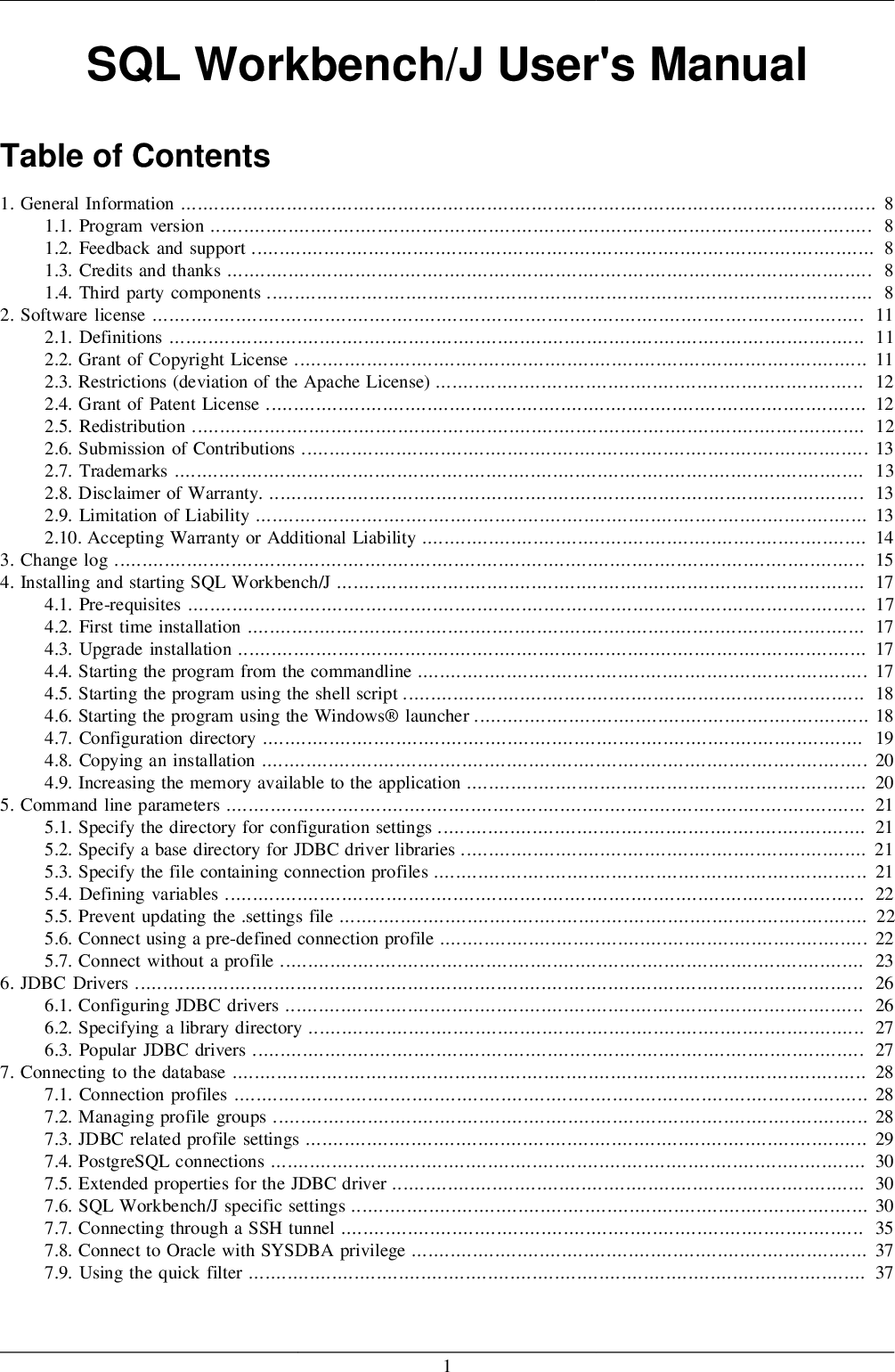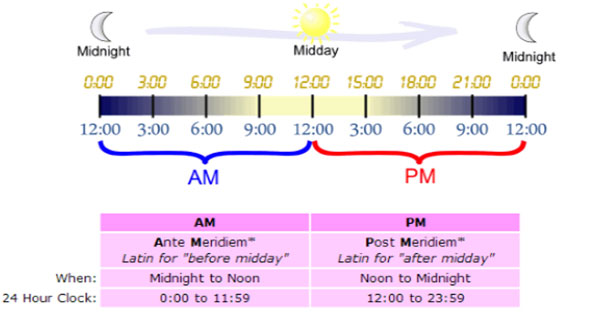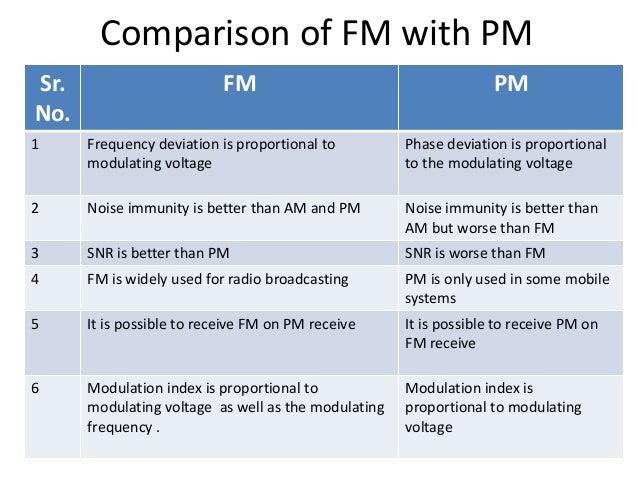In the United States and several other English-speaking countries, we use these abbreviations all the time. The correct use of them makes or breaks our alarm-clock settings. And yet many people can't correctly answer the question "What does AM and PM stand for?" Well, if you're one of those people, wonder no more. PM stands for "post meridiem," meaning "after noon" or "after midday," and as such applies to the times from noon onward. The Latin word "post" has also made its way into our language on its own, synonymous with "after." To unlock some more time mysteries, find out why we have daylight saving time.
Well, if you're one of those people, wonder no more. PM stands for "post meridiem," meaning "after noon" or "after midday," and as such applies to the times from noon onward. English-speaking countries have been using the "AM" and "PM" abbreviations since the 17th century. The Latin word "post" has also made its way into our language on its own, synonymous with "after." To unlock some more time mysteries, find out why we have daylight saving time. The meaning of AM and PM is the abbreviation of Latin phrases. In particular, AM stands for ante meridiem, which translates into English as 'before midday'.
Whereas PM is post meridiem and means in English 'after midday'. These abbreviations are used to identify the time in the \(12\)-hour clock format instead of using \(24\) hours. The meaning of AM and PM is the simple abbreviation of Latin phrases. Meanwhile, PM is post meridiem and means in English 'after midday'.
These abbreviations are used to identify the time in the 12-hour clock format instead of using 24 hours. Considering that day has 2 cycles, AM and PM denote whether it is before or after the middle of a day. The Collector assumes that all log messages coming from a particular Source will have timestamps that are close together.
If a message comes through that appears to be more than one day earlier or later than recent messages from that Source it will be auto-corrected to match the current time. You can stop this auto-correction by explicitly configuring a custom timestamp format on your Source. Ante meridiem is generally referred to as AM, am, a.m., or A.M, whereas PM, pm, p.m., or P.M. Are typically abbreviated as post meridiem. The 12-hour clock method defines all 24 hours of the day using the numbers 1 to 12, followed by am or pm.
5 AM is early in the morning and 5 PM is late in the afternoon; 1 AM is one hour after midnight, and 11 PM is one hour before midnight. Ante meridiem is generally referred to as AM, am, a.m., or A.M whereas PM, pm, p.m., or P.M. Are typically abbreviated post meridiem.
Means for "post meridiem", which are Latin phrases meaning before midday, and after midday. Therefore, you use the abbreviation A.M. After a time to refer to any time before noon but after midnight (i.e., the morning).
Is used to refer to any time after noon until midnight (i.e., the afternoon, evening, and night). There are two ways of representing time – First is through the 12-hour clock and the second is through the 24-hour clock. According to the 12-hour system, 24 hours of a day is divided into 2 periods, each lasting for 12 hours. The initial 12-hour period which lasts from midnight to noon is designated with AM while the next 12-hour period which lasts from noon to midnight is designated with PM. They are used to differentiate the time in day and night in the 12-hour time zone. They divide the 24 hours of a day into two time zones lasting 12 hours each.
The first 12-hour duration runs from midnight to noon and is designated by am. The second 12-hour duration runs from noon to midnight and designated by pm. So, the numbers from 1 to 12 followed by am or pm are used to identify all 24 hours of the 12-hour clock system.
AM and PM are Latin words that are used to reference time. AM and PM are the abbreviated terms for Ante meridiem and Post meridiem which means before noon or midday and afternoon or midday respectively. The timestamp is the part of a log message that marks the time that an event occurred. During ingestion, we can detect the message timestamp, convert it to Unix epoch time , and index it. The timestamp is parsed either using the default timestamp parsing settings, or a custom format that you specify, including the time zone.
To illustrate this, consider that "a.m." and "p.m." are abbreviations for "ante meridiem" and "post meridiem," which mean "before noon" and "after noon," respectively. Since noon is neither before noon nor after noon, a designation of either a.m. Also, midnight is both twelve hours before noon and twelve hours after noon. Do you ever wonder why we denote time in terms of AM and PM?
From where did this way of denoting time originate? If the answer to any of these questions is yes, then you have reached your destination. Before understanding what AM and PM mean in the context of the 12-hour clock system, it is important to understand the 12-hour clock system first.
The 12-hour clock system is a time convention used mainly in most analogue and digital clocks. This is a popular way to read time in most English-speaking nations and the then British colonies. The 12-hour clock convention is the one in which 24 hours are divided into two periods- AM and PM. Click Test once you've entered all of your custom timestamp formats. If you've entered a valid regex in the timestamp locator, you'll see the Test Timestamp Parsing page. Enter sample log messages to test the timestamp formats you want to extract.
Clearly indicate which part of the day is being referred to, expressions of time like in the morning, this afternoon, and tonight are unnecessary with these time abbreviations. Although such expressions are common in speech, avoid using them with a.m./p.m. However, AM/PM within the 12-hour time format is not effective way to indicate the precise time. There might be confusion regarding the time of a day as well as it can mislead in the date when midnight is not properly indicated. Considering that legal and other formal standards require the use of 24-hour convention, the utilization of AM and PM would remain only as the tradition in informal communication.
The coordination of military actions requires the precise and unambiguous comprehension of time. Since the solar day is the primary measure of time, the military establishments utilize 24-hour clock format and do not separate hours minutes. For instance, instead of Noon or 12 PM , military time denotes 1200 which should be pronounced as twelve hundred. The same pronunciation is also used to indicate time in radio communication. This format is the most exact way to refer to time and use it for navigation and scheduling.
Daylight Saving Time Why do many countries set the clocks back and forth an hour twice a year? UTC – Coordinated Universal Time Coordinated Universal Time is the basis for civil time today. This 24-hour time standard is kept using highly precise atomic clocks combined with the Earth's rotation.History of DST History of Daylight Savings Time . Why was Daylight Savings Time created, who invented it, and what is the point of having a time change every year?
Greenwich Mean Time is often interchanged or confused with Coordinated Universal Time . But GMT is a time zone and UTC is a time standard. A 12 hour time indication is only used in English speaking countries. The written time has only 12 hours, while we have 24 hours in one day. To determain if a written time is an hour in de morning or in the evening AM and PM is used. In most European countries there is a 24-hour written time used where 0 to 12 hour is in the morning and is in the afternoon/at night.
The Collector also assumes that all log messages coming from a particular Source will have timestamps that are within a window of -1 year through +2 days compared to the current time. Any log message with a parsed timestamp outside of that window is automatically re-stamped with the current time. You must contactSumo Logic Supportto adjust this auto-correction behavior.
Seehow to ingest old or historical datafor further details. There are two primary timekeeping systems used today in the world. The first and most popular is the 24 hour clock for which military time is based on.
The second and most popular in the United States is the 12 hour time keeping system. The twelve hour time keeping system is used by the United States, Australia, Malaysia, New Zealand, Columbia, Philippines, Many areas of Canada, and informally in other countries. AM stands for ante meridiem, which means "before midday" and denotes midnight, while PM is post meridiem and means in English, denoting noon. PM is post meridiem and means in English "after midday" denoting noon, while AM stands for ante meridiem and denotes midnight.
Another confusing notion about the use of AM and PM is to understand how to properly write it. Different style guides suggest different types of writing the abbreviation. For instance, there could uppercase AM/PM or lowercase am/pm. Also, the use of the period between the letters (A.M./P.M.) might be acceptable. Nevertheless, the most common rule in formal writing is to use uppercase AM/PM1. The lack of consistent rules among all style guides is the primary factor why people could face the issue of how to write the time appropriately.
The daily cycle starts at 12 midnight, runs through 12 noon, and continues until just before midnight at the end of the day. There is no widely accepted convention for how midday and midnight should be represented. The 12-hour clock was developed from the second millennium BC and reached its modern form in the 16th century AD. Using numbers from 1 to 12, followed by am or pm, the 12-hour clock system identifies all 24 hours of the day. For example, 5 am is early in the morning, and 5 pm is late in the afternoon; 1 am is one hour after midnight, while 11 pm is one hour before midnight.
At night your skin can focus on repairing the damage caused during the day by external aggressors. This means that your skin can more easily absorb and is more receptive to the skincare products that you apply as part of your evening skincare routine. Your evening skincare routine provides the opportunity to introduce active ingredients that will deeply moisturise and hydrate your skin. By default, we use the time zone from your web browser set by the operating system to display hours and minutes everywhere in our user interface. You can change the default time zone that the user interface displays by adjusting theDefault Timezonesetting on thePreferencespage.
This option overrides the time zone from your web browser, and changes how hours and minutes are displayed in the UI. But this is a personal setting, and does not change the time zone for anyone else in your organization. In theFormatfield, enter the timestamp format the Collector should use to parse timestamps in your log. If the timestamp format is in epoch time, enter "epoch" in the Format field. Your custom timestamp format must follow our supported timestamp conventions. When emphasizing an exact or precise time, the abbreviations "a.m." and "p.m." are used.
These two abbreviations stand for the Latin terms "ante meridiem" and "post meridiem," which literally mean before noon and after noon. The clocks we use today divide the day into two 12-hour time increments. This is because there are a total of 24 hours in a single day, which can be further split into two 12-hour periods. This is odd, considering when you look at clocks, they only display enough time to account for one of the two 12-hour periods. The abbreviation a.m., which comes from the Latin ante meridiem , designates the first 12-hour period of the day.
The second half of the day takes the abbreviation p.m., from post meridiem . To understand this system of denoting time, you can simply look at it as two different time zones of 12 hours each that represent day and night. Basically, 24 hours are divided into two time zones that last for 12 hours each. The first 12-hour duration starts from midnight and lasts till noon which is called by AM .
The second 12-hour duration begins from noon and lasts till midnight denoted by PM . AM and PM are both Latin terms used to represent time in the 12-hour convention. Stands for Ante Meridiem and P.M. Meridiem is a Latin word that basically means midday . Hence, Ante Meridiem means "before midday" and Post Meridiem means "after midday".
In the 12-hour clock system, AM and PM are used before noon and afternoon respectively. The International Organization for Standardization proposed to implement one format for the information exchange. However, the international agreements do not directly regulate how organizations within the countries use timekeeping format for the interactions and communication.
Hence, some domestic organizations could proceed to use AM and PM. The tradition to measure time with a 12-hour standard has been effective since ancient times. In particular, people were able to measure time only using the sun. Therefore, with the help of sundial clocks, ancient people were able to identify time only during a particular period of the day.
Eventually, the decision to divide a day into two cycles which lasts 12 hours was influenced by the fact that the moon also had 12 cycles. However, the 12-hour system has its flaws with the ambiguity in the understanding. It might be difficult for the people who use only a 24-hour clock to memorize when it is AM or PM. This time convention is also might be confusing for the writing because it has multiple rules regarding how to write these abbreviations. In most countries, however, the 24-hour clock is the standard system used, especially in writing.






















No comments:
Post a Comment
Note: Only a member of this blog may post a comment.